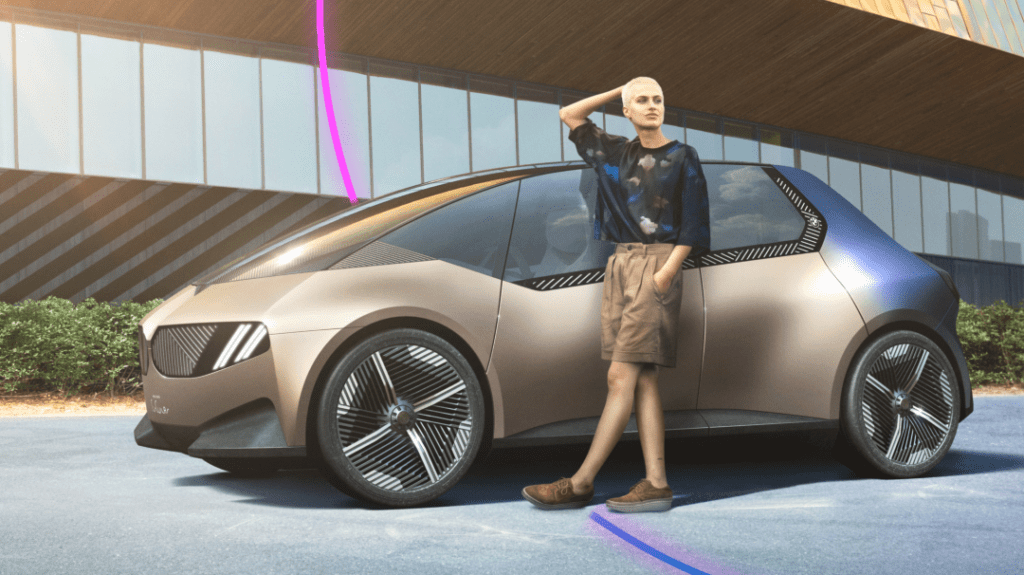COP26 and the automotive world: the key talking points
15 November 2021

Part one of Autovista24’s analysis of COP26 and what it means for the automotive sector, journalist Rebeka Shaid discusses the cleanliness of electrically-chargeable vehicles (EVs) and the need to include younger generations in the process of electrification.
The UN’s climate summit COP26 brought world leaders, governments, and organisations together in one of the biggest conferences on the future of the climate to date. Numerous deals and agreements were struck to lower carbon footprints and reduce reliance on fossil fuels. It was an important conference for the automotive sector too. As a key contributor to climate change, there was a focus on ensuring the industry plots a path to a sustainable future.
Cleaning up electrification
But how clean are EVs, and what does the automotive industry have to do to be truly sustainable? At COP26, a panel of experts attempted to answer these questions as carmakers around the globe increasingly focus on hitting stringent climate targets in the coming years.
When it comes to reducing carbon emissions, electrification is often considered to solve the industry’s problems. According to the International Energy Agency (IEA), more than 10 million EVs can now be found on the roads worldwide, roughly making up 1% of the global car stock. By 2030, this figure is projected to jump to 300 million, with EVs expected to account for 60% of new car sales.
As the market continues to grow, it is important to ensure that electric-car production will operate within a truly green framework – which is not always the case. Materials and designs used to manufacture these types of vehicles are not automatically sustainable.
Eliminating rare earth metals
‘All is not well with electric vehicles,’ said Peter Fleet, chairman at green tech company Advanced Electric Machines (AEM). ‘So what are the issues with a rapid transition to electric?’ he prompted the audience, speaking at a COP26 event called ‘Novel electrification through advanced sustainable technologies.’
Fleet warned that EVs are not yet the perfect answer as core elements found in their motors can be problematic. The majority of EVs rely on permanent magnet motors containing rare earth metals. The mining of these materials is highly damaging to the environment, with the extraction of one tonne of rare earth metal creating 1.4 tonnes of radioactive waste and 27.6 tonnes of CO2.
‘Most permanent magnet motors are most likely destined for landfill,’ Fleet said, urging that rapid change is required.
In collaboration with carmakers and academics, AEM is looking at ways of cleaning up the automotive industry’s act. The company has manufactured several electric motors that it says use greener technologies.
The UK-based business spun out from Newcastle University has eliminated environmentally-damaging primary rare earth materials from its patented motor technology, promising higher levels of performance and efficiency. It has also removed the need to use copper in its motors, meaning motors are fully-recyclable at end-of-life.
This technology sounds promising, as rather than copper needing to be removed by hand before the casing is recycled, AEM’s motors can be smelted as scrap. Notably, the steel and aluminium contained in these motors will then separate naturally. Compared to permanent magnet motors, which are often costly and more difficult to recycle owing to the use of magnets and copper, AEM’s technology shows that there are more sustainable solutions to producing EV motors.
Recycling is key
Making EVs cleaner requires cutting-edge tech, with the focus on innovation playing a major role for carmakers. But decarbonising the transport sector is not only something automotive companies are looking at. Universities are continuously researching ways to solve some of the problems that come with electrification, including how to make the supply chain and technologies more environmentally-friendly.
Professor Mark Johnson from the University of Nottingham joined the COP26 event, elaborating on the use of power electronics, calling it an ‘all-pervasive technology’. Used in a range of applications to convert electrical power from one voltage and current to another, power electronic systems are key components for any hybrid or electric car.
Johnson emphasised a rapid scale-up in the production of power electronics is needed over the coming decade. However, he pointed out that not all EV powertrains are equal and urged for a more serious approach to recycling to stop the mounting global e-waste issue.
‘In 2019, we created 53.6 million tonnes of e-waste,’ Johnson said. ‘Just imagine the impact 128 million electric vehicles per year, what that is going to add to that mountain of waste.’
Making power electronic systems – a largely invisible technology – more sustainable boils down to reducing, reusing, and recycling. The University of Nottingham has dedicated research on this, showing that getting rid of heavy copper cables and redundant packaging to make power electronics lighter, more cost-effective and efficient is possible.
His colleague from the University of Birmingham, Professor Allan Walton, pointed out another issue that electrification brings with it: the challenges around mining for magnets. EVs use hundreds of magnets and mining for rare earth metals to produce these can be ‘dirty business.’ Extraction of rare earth metals is very complex and not always done in a sound way, Walton added.
The key then is to look at ways to extract and re-process magnets, thus lowering the environmental impact. However, the market for recycling rare earth metals is still in its infancy and more needs to be done to remanufacture magnets, Walton warned.
Putting younger generations in charge
It is undeniable that younger generations will bear the brunt if climate change targets are not met in time. Relying solely on electrification will not do the trick. While COP26 was criticised by young activists, most notably by Greta Thunberg who slammed the event as a ‘greenwashing’ failure, the summit also offered younger people a platform to make their voices heard.
At a session titled ‘Talking about our generation: putting younger generations in charge of the switch to sustainable energy and transportation’, young people were given the opportunity to talk about what else needs to be done to clean up the transport and energy sectors.
Fully Charged and National Grid joined the panel. Fully Charged bills itself as the world’s number one clean energy and electric vehicle channel, exploring whether ‘it is possible for humans to no longer need to burn things to live, to work and to travel.’
It said the energy sector, intrinsically linked to the automotive industry, has made significant steps in the right direction over the last decade, with wind and solar now accounting for 25% of power in the UK. Renewable energy is vital when striving for goals to make electrification cleaner and leaner.
Why is not all energy renewable, what will future transportation look like, will there be enough green energy? Those were some of the questions younger people asked. These thought-provoking questions point to the fact that the future of mobility will not only heavily rely on going electric and autonomous.
There is also a need to go greener by focusing on sourcing energy sustainably and concentrating on shared-mobility services. Incentivising people to use more public transport or bicycles might prove challenging, but it is part of a broader scheme when considering infrastructure goals. With governments and carmakers pushing for more electrification, thinking outside the box is key and young people might be the ones that have the answers when it comes to making transport truly green.
Stay tuned to Autovista24 for part two of its COP26 analysis.



